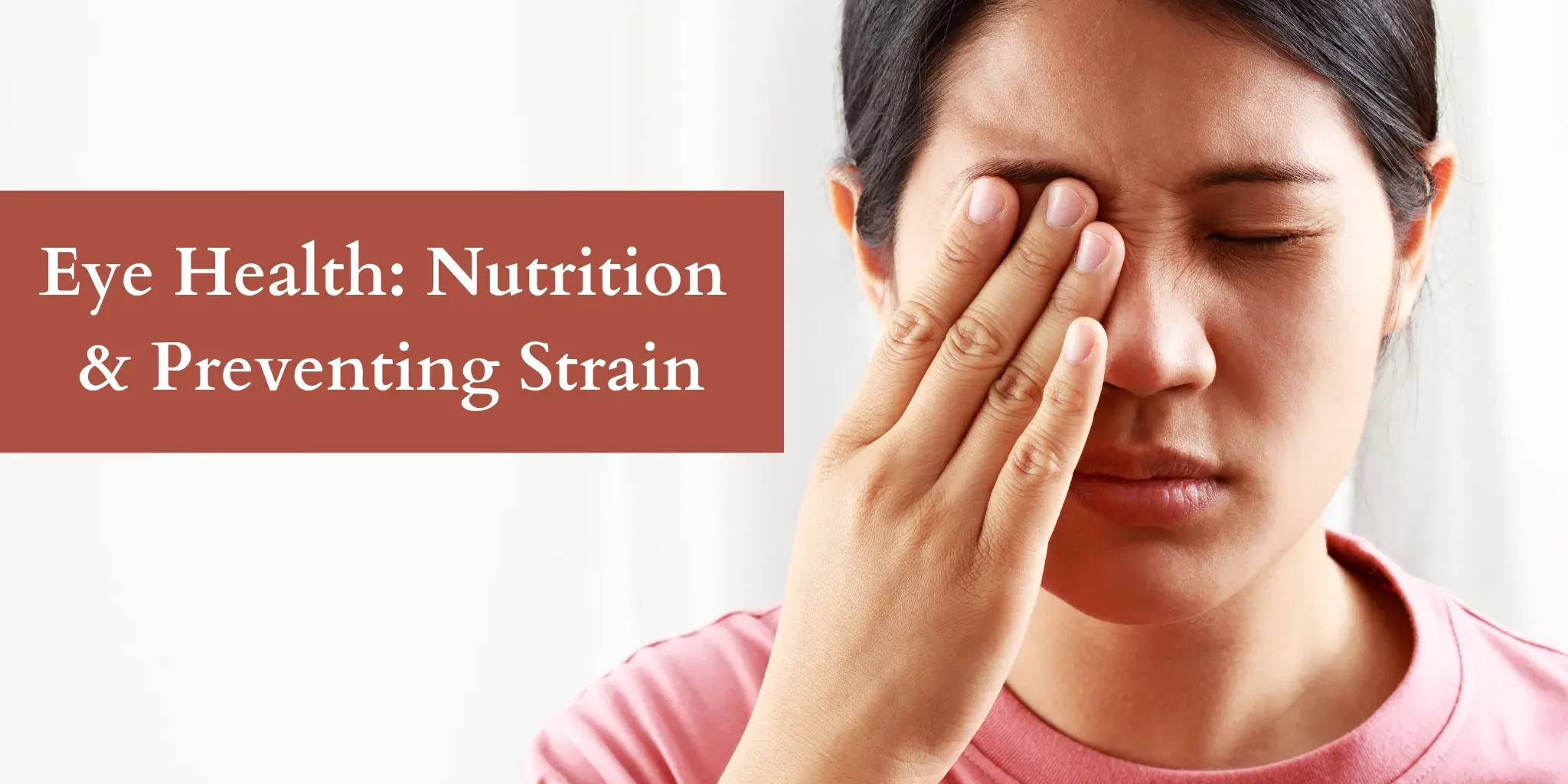Our eyes are our windows to the world, allowing us to experience the beauty and wonder of life. However, in today’s digital age, we often subject our eyes to prolonged screen time, artificial lighting, and environmental stressors that can lead to eye strain and other vision-related issues. To keep our eyes in optimal condition and reduce the risk of eye strain, proper nutrition plays a crucial role.
In this blog post, we will explore the connection between nutrition and eye health and provide practical tips for maintaining healthy eyes and preventing eye strain.
The Importance of Nutrition for Eye Health
The old saying “you are what you eat” holds true for eye health as well. Proper nutrition ensures that your eyes receive the essential nutrients they need to function optimally and stay in good shape. Two key nutrients that are particularly important for maintaining healthy eyes are antioxidants and omega-3 fatty acids.
Antioxidants
Antioxidants are compounds that help protect our cells, including those in the eyes, from damage caused by free radicals. Free radicals can accelerate the aging of eye tissues and increase the risk of eye diseases. Antioxidants such as vitamins A, C, and E, as well as minerals like zinc, can help neutralize these harmful molecules.
Foods rich in antioxidants include:
- Carrots: These are high in beta-carotene, which the body converts to vitamin A, a crucial nutrient for good vision.
- Citrus Fruits: Oranges, lemons, and grapefruits are packed with vitamin C, which can help reduce the risk of cataracts and age-related macular degeneration (AMD).
- Nuts and Seeds: Almonds, walnuts, and sunflower seeds provide vitamin E, which is beneficial for overall eye health.
- Leafy Greens: Spinach, kale, and collard greens are excellent sources of antioxidants and other eye-protecting nutrients.
Omega-3 Fatty Acids
Omega-3 fatty acids are essential for maintaining the structural integrity of the eye. They are also known for their anti-inflammatory properties, which can help reduce the risk of dry eye syndrome and AMD.
Foods rich in omega-3 fatty acids include:
- Fatty Fish: Salmon, mackerel, and trout are excellent sources of docosahexaenoic acid (DHA) and eicosapentaenoic acid (EPA), two types of omega-3s that benefit eye health.
- Flaxseeds and Chia Seeds: These seeds are rich in alpha-linolenic acid (ALA), a plant-based omega-3 fatty acid.
- Walnuts: They contain both ALA and antioxidants, making them a great choice for eye health.
Preventing Digital Eye Strain
In addition to proper nutrition, there are several steps you can take to prevent eye strain caused by prolonged screen time:
- Follow the 20-20-20 rule: Every 20 minutes, take a 20-second break, and focus on something at least 20 feet away. This can help reduce eye strain.
- Adjust your screen settings: Ensure that your screen is at eye level and that it’s not too bright. Reducing glare and blue light exposure can help.
- Blink often: Blinking helps keep your eyes moist. Be conscious of blinking when using digital devices.
- Use artificial tears: Over-the-counter artificial tears can help keep your eyes lubricated.
- Consider computer glasses: Computer glasses with an anti-reflective coating can reduce glare and eye strain.
Summary
Maintaining healthy eyes is crucial for a high-quality life, and the right nutrition is key to preserving eye health and preventing eye strain. By including foods rich in essential vitamins and antioxidants in your diet and following effective eye-care practices, you can safeguard your eyes from strain and discomfort, ensuring they serve you well.
For personalized guidance on eye health, consult with an expert Dr. Vasundhara Kulkarni, an esteemed Eye Specialist at Iris Eye Care in Moshi.







